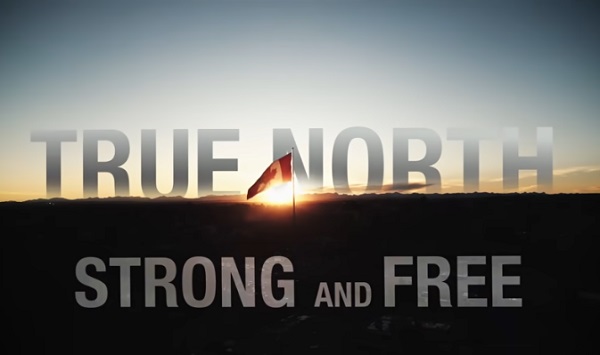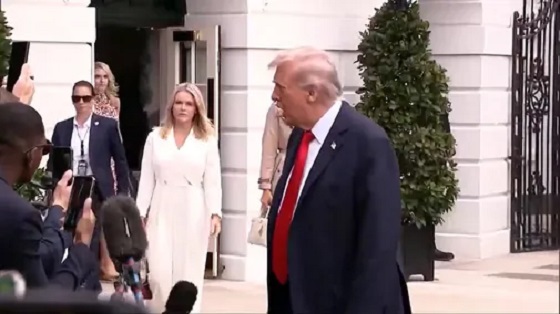Business
Mark Carney’s Climate Competitiveness Pitch Falls Flat
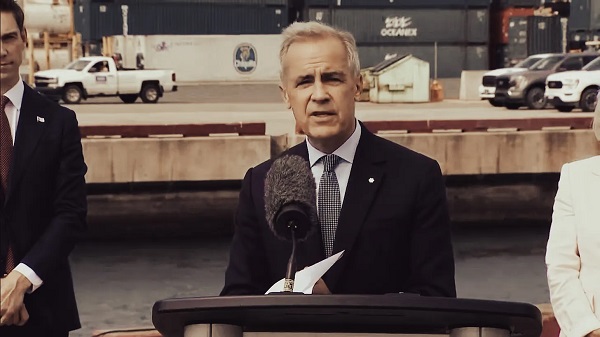
As Canada loses 50,000 manufacturing jobs, Carney talks climate buzzwords and Joly pushes EV imports, while Brookfield invests in pipelines abroad. Who is Ottawa really working for?
Prime Minister Mark Carney was in St. John’s to hand out money — $80 million of his new billion-dollar “regional tariff response fund” for small and medium businesses in Atlantic Canada. Which, let’s be honest, sure sounds a lot like an election pitch.
But then a reporter stood up and asked the real question: how does Canada plan to meet its climate targets for 2030 and 2035? Now, keep in mind, unemployment in this country is at seven percent—the highest in years—families are losing jobs, farmers are being hammered by tariffs, and this is what the press corps is worried about. Climate targets. Eye roll.
So how did Carney respond? With a brand-new slogan cooked up by a taxpayer-funded focus group: “climate competitiveness.” That’s the phrase. Climate competitiveness. Sounds impressive, doesn’t it? Like there’s a scoreboard somewhere, and Canada is going to “compete” to be the greenest.
But we have to ask the serious question, ‘compete’ against whom, exactly?
Lets look at China China? You know, the country that supplies about fifteen percent of Canada’s total imports. You know the country that supplies almost all of the goods in Canadian tire. Canada imported $62 billion (USD) worth in 2024 alone. Yeah, that China. The one that also happens to be the world’s largest emitter of greenhouse gases, responsible for about thirty percent of all global CO2 emissions. Eleven to twelve billion metric tons every single year, which is more than twice the United States.
So is that who Mark Carney thinks we’re competing with? Beijing? The same country where your solar panels, your EV batteries, your “green tech” all get churned out by factories powered with coal?
Let’s be real for a second. Almost everything you buy comes from there. Open Amazon right now, cheap electronics, kitchen gadgets, plastic junk that breaks in a week — all made in China. Walk into Canadian Tire, Walmart, Dollarama, it’s the same story. Try, seriously try, to find a sock not made in China. You can’t.
And here’s the kicker. You might think, okay, maybe Ottawa has a plan. Maybe, just maybe, someone in Mark Carney’s office has thought: “Wait a second, all these goods from Amazon, all the crap piled high at Canadian Tire, maybe we should tax the carbon embedded in them, so we can actually build a Canada-first, Canada-strong economy.”
Seems obvious, right? Put tariffs on dirty imports. Level the playing field. Protect Canadian workers.
Nope. Not happening. Elbows down, Ottawa doesn’t tax a single ton of Chinese carbon. Not one. Thats right Beijing carbon heavy manufacturing gets a free ride.
Our carbon taxes? They apply only to you. The farmer in Moose Jaw filling up his tractor. The commuter in Moncton just trying to get to work. The family in Thunder Bay who wants to heat their home through a Canadian winter. They pay. You pay. Everyone here pays. But China? The country that floods us with billions in imports, all made in coal-fired factories? Nothing.
I’m an independent Canadian journalist exposing corruption, delivering unfiltered truths and untold stories.
Join me on Substack for fearless reporting that goes beyond headlines
So let’s be crystal clear: the carbon tax isn’t about saving the planet. It’s about punishing Canadians for living in Canada. And giving Beijing an even bigger advantage while we kneecap our own economy and call it… “climate competitiveness.”
So maybe we’re not competing with China, Mark Carney would say. Maybe it’s India.
India!!! Don’t make me laugh! This is a country that’s made it perfectly clear it is not going to strangle its own economy in the name of “climate commitments.” They’ve said it over and over again. Yes, they’ll get to net-zero… by 2070. Fifty years from now. By then, most of us will be dead. But don’t worry, they’ll be green in the afterlife.
And the actions back it up. Just this summer, July 2025, India scrapped its sulphur dioxide rules for coal plants. For a decade, they had mandated clean-air technology, scrubbers; on coal-fired plants. Expensive, sure, about $30 billion worth. But at least it kept the air breathable. And what did they do? They reversed it.
Now, if a coal plant is scheduled to retire before 2030, it doesn’t need the technology at all. If the plant isn’t near a dense population center, same deal, pollute away. Fire up the stacks. Pump sulphur dioxide into the atmosphere.
And remember, coal already powers most of India’s energy needs. They’re building, expanding, doubling down. Because India’s priority isn’t climate sermons, it’s economic development and energy security. They want cheap, reliable power. And they’re not going to apologize for it.
So let’s recap: China is the world’s biggest polluter, building coal plants like Starbucks opens coffee shops. India has flat-out said, “We’ll clean up in 50 years.” And Mark Carney thinks Canada, with 40 million people, is “competing” with them by taxing farmers, commuters, and families into oblivion while handing foreign polluters a free pass.
And if you think it’s just China and India, think again. Let’s take a quick tour.
Brazil? They talk a good game at climate summits, but they’re still torching the Amazon to make room for cattle and soybeans. Net-zero slogans on one hand, bulldozers on the other.
Vietnam? Their economy is powered by coal too, and they’re one of the fastest-growing importers of Canadian coal. Yes, we ship them coal so they can burn it. But don’t worry, we’ll slap a carbon tax on a Saskatchewan farmer for planting wheat.
And Russia… Well, Russia doesn’t even pretend. They drill, they mine, they pipe gas straight into Europe, and they laugh at the idea of “climate competitiveness.” They’re too busy selling oil to fund their wars.
So that’s the global competition Mark Carney thinks we’re in. Countries that are either doubling down on coal, clear-cutting rainforests, or weaponizing oil and gas, while Canada is told to spend a million dollars to move an anthill before we can build a mine.
Mélanie Joly Talks Climate Targets as Manufacturing Jobs Disappear
And speaking of “climate competitiveness,” Mélanie Joly shows up in Montreal, standing in front of aluminum executives, at the exact moment Canada has lost more than 50,000 manufacturing jobs since January. Fifty thousand. Gone. Families ruined, paycheques wiped out. And what does she talk about? Not jobs. Not tariffs. Not survival. No, she talks about climate targets. EV mandates. “Competing” with Chinese electric cars.
Yes, while Canadian auto workers are staring down layoffs, her big idea is to import more EVs from Asia and call it competition.
That’s not a joke… she actually said that.
Canada set a goal: by 2026, 20% of new car sales should be EVs. You know where we are today? Eight percent. Less than half. Why? Because the government pulled subsidies, sales collapsed, and now automakers are being squeezed with 25% tariffs from the U.S. and penalties at home if they don’t hit EV targets. It’s like being forced to sprint while someone nails your shoes to the floor.
So what’s Joly’s solution? Not to fix the tariffs. Not to protect Canadian auto workers in Cambridge, Alliston, Hamilton, Brampton. No… she wants to “compete with China’s EVs” by importing them from Asia and Europe. Think about that: Canada loses tens of thousands of manufacturing jobs, and her answer is. Wait for it…
Import more foreign cars. That’s her industrial strategy.
And then she promises, with a straight face, that Canada will still “follow our goals” for 2030 and 2035. Never mind that when those targets were set, Donald Trump wasn’t back in the White House, the Inflation Reduction Act was still in place, and Canada wasn’t facing a trade war. But hey details.
This is the Liberal Party’s version of economic leadership: brag about climate targets nobody believes in, while your auto sector bleeds out, while aluminum workers sit in a room wondering if they’ll even have jobs next year. And she’s smiling the whole time.
Final Thoughts
Look, I’m not anti-green. Nobody’s against cleaner air or smarter technology. But I’m also not stupid. And when you actually listen to these people. Mark Carney, Mélanie Joly, the whole Liberal bunch, you realize pretty quickly what’s going on. They’re snake-oil salesmen. Selling a grift to unassuming Liberal voters, to suburban women who want to feel virtuous, to boomers who want to believe they’re “part of the solution.” And the pitch is always the same: don’t worry, we’ve got a plan.
But the truth is, the plan is a scam. While Carney lectures Canadians about “climate competitiveness,” his company Brookfield has been buying pipelines. Not small ones. Big ones.
In Canada, Brookfield swallowed Inter Pipeline—Cold Lake, Polaris, Corridor— hundreds of kilometers of pipe moving nearly a million barrels a day out of Alberta. And just this year? They went bigger. Colonial Pipeline in the United States. Five-thousand five-hundred miles of pipe, three million barrels of gasoline, diesel, and jet fuel flowing every day from Texas to New Jersey. Brookfield owns it. Mark Carney’s company owns it.
So here’s the question: if pipelines are evil, if oil and gas are killing the planet, why is Mark Carney investing billions in them? Why is he making money hand over fist off the very industry he’s suffocating here at home?
Because it’s a shell game. They’ve brainwashed you into thinking they’re virtuous while they cripple your income, your children’s prosperity, your country’s future. They make it impossible to build here, then they offshore it to China, and sell it back to you at a premium. And if you tried to produce the same thing in Canada? Carney and his GFANZ banker friends would wag their climate-virtuous fingers and shut it down.
It’s all fake. A grift. These people are liars, pure and simple.
Here’s the reality: real progress doesn’t come from more red tape and taxes. It comes from innovation. Twenty years ago a light bulb was 100 watts. Today, the LED equivalent is 13.5 watts. That’s how you build, by making things better, faster, more efficient. Businesses already want that. Efficiency is savings, savings is profit. You don’t need a Liberal lecture for that.
And that’s the choice in the next election. Do we keep letting grifters in Ottawa sell us out to China while pretending they’re saving the planet or do we take our country back?
Canada was built by farmers who fed the world, by workers who laid the tracks, by families who braved the cold because they believed this country was worth it. They didn’t wait for permission from bankers and bureaucrats. They just built.
It’s time we did the same. Build it strong. Truly build Canada first.
This country doesn’t belong to the Laurentian elite.
It doesn’t belong to the lobbyists in Ottawa.
And it sure as hell doesn’t belong to Mark Carney.
It belongs to us… the people who built it, who work it, who love it. True North, strong and free.
I’m an independent Canadian journalist exposing corruption, delivering unfiltered truths and untold stories.
Join me on Substack for fearless reporting that goes beyond headlines
Business
Poilievre: “Carney More Irresponsible Than Trudeau” as Housing, Jobs, and Energy Failures Mount
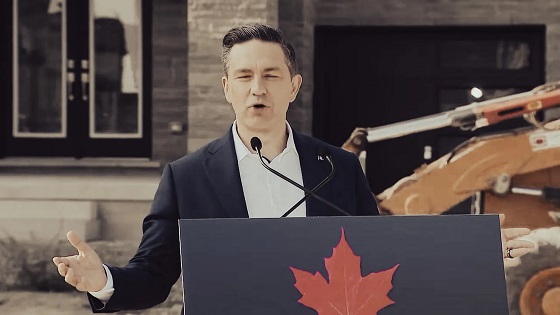
50,000 lost manufacturing jobs, 86,000 more unemployed, soaring housing costs, and blocking every LNG project while vowing to end the TFW program
Pierre Poilievre opened his press conference with a direct attack on Mark Carney and the Liberal record on housing, framing the crisis as the product of government mismanagement rather than market forces.
He began by pointing to Conservative MP Scott Aitchison, a former mayor, as an example of what can be done when local leaders “cut the taxes and the development charges and the wait times so that building can happen.” Then came the pivot: “What a contrast with Justin Trudeau — excuse me, with Mark Carney,” he said, before slamming Carney’s choice of Gregor Robertson as housing minister. Robertson, he reminded the crowd, presided over a 149% increase in Vancouver housing costs and more than doubled homebuilding taxes. Carney, Poilievre said, rewarded that record by handing him the national housing file.
The setting itself — Deco Homes, a family-run builder founded by Italian immigrants — was chosen deliberately. Poilievre praised the Gasper family for their role in building Canada’s homes and businesses, but then asked whether such families could do the same today. His answer was no. “After a decade of Liberal taxes, Liberal spending, out-of-control Liberal immigration, reckless crime policies… the Canadian promise is really broken.”
From there, he broadened the attack. He spoke of an entire generation priced out of homeownership, of immigration growing “three times faster than housing and jobs,” of crime rising, and of what he called “the worst economy in the G7.” And then he turned squarely on Carney: “Mr. Carney is actually more irresponsible than even Justin Trudeau was,” citing an 8% increase in government spending, 37% more for consultants, and 62 billion dollars in lost investment — the largest outflow in Canadian history, according to the National Bank.
The message was simple: Liberals talk, Conservatives build. Poilievre painted Carney as a man of speeches and promises, not results. “The mistake the media is making is they’re judging him by his words rather than his deeds,” he said.
It was an opening statement designed less to introduce policy — those details came later — and more to frame the battle. For Poilievre, Carney isn’t just Trudeau’s replacement. He’s Trudeau’s sequel, and in some ways worse.
During the Q and A portion of the presser; Pierre Poilievre was pressed on immigration today, and what he said was blunt. Canada, he argued, once had the “envy of the world” system: immigrants came in at numbers the country could absorb. There were jobs, housing, health care. Everyone integrated. Ten years later? He says the Liberals have destroyed that.
The facts he used were stark. According to Poilievre, Canada is bringing in people three times faster than homes and jobs are being created. He accused the government of allowing “massive abuses” of the international student program, the Temporary Foreign Worker program, and asylum claims, with what he called “rampant fraud” right under Ottawa’s nose.
He tied this directly to the economy: youth unemployment, he said, is the worst in three decades. At the same time, employers are importing more temporary foreign workers than ever, this year at a record high and using them for cheap labor under poor conditions. His line: “While our young people can’t find jobs, employers are able to exploit temporary foreign workers by giving them lower wages and terrible working conditions.”
But here’s the part that stands out politically. Poilievre said, “Immigrants are not to blame.” He put the responsibility squarely on Liberal governments, calling their immigration numbers “reckless and irresponsible.”
His fix? End the Temporary Foreign Worker program. Cut immigration levels back to “the right numbers and the right people” to fill jobs Canadians can’t do. Tighten border standards to keep criminals out. And, in his words, “always and everywhere put Canada first.”
Pierre Poilievre didn’t hold back when asked about Mark Carney’s record. His words: “Mr. Carney is actually more irresponsible than even Justin Trudeau was.” That’s not a throwaway line, he backed it with numbers.
According to Poilievre, Carney inherited what he called a “morbidly obese government” from Trudeau and made it worse: 8% bigger overall, 37% more for consultants, and 6% more bureaucracy. He says Carney’s deficit is set to be even larger than Trudeau’s.
Then the jobs number: 86,000 more unemployed people under Carney than under Trudeau. That, Poilievre argued, is the real measure, not the polished speeches Carney gives. His line: “The mistake the media is making is they’re judging him by his words rather than his deeds.”
He also went after Carney for what hasn’t happened: “He has not approved a single major national project.” Meanwhile, Poilievre says food price inflation is even worse today, crime policy hasn’t changed the same “catch and release” approach and every big promise Carney made has already been broken.
Pierre Poilievre was asked about Ukraine, and his answer wasn’t about speeches or handshakes in Brussels. It was about pipelines.
“The best way to put Canada first while helping Ukraine is to sell our oil and gas in Europe.” His argument: Vladimir Putin bankrolls his war because Europe still buys his fuel. Poilievre said if Canada had built the Energy East pipeline, we’d be shipping a million barrels of oil a day to Europe right now.
He went further: approve LNG plants immediately, liquefy tens of billions of dollars of Canadian gas, and ship it overseas to “fully displace” Russian sales. His line: “Instead of the money going to Putin’s war machine, it will go to the trades workers in this country.”
And then the indictment of the Liberals: “Mark Carney and the Liberals have blocked every single LNG project that has been put before them. As a result, we only have one plant and it was approved by Stephen Harper.”
So the contrast is stark. Carney talks about climate virtue. Poilievre says: build pipelines, sell fuel, kill Putin’s war economy, and pay Canadian workers. His closer: “That is how you put Canada first.”
Final Thoughts
So let’s just be honest. Under Mark Carney’s leadership, the numbers aren’t just bad they’re devastating. In a matter of months, Canada has lost 50,000 manufacturing jobs. These are not low-skill jobs; they are the backbone of the economy, the kind of work that built the middle class in this country. Add to that another 86,000 unemployed overall compared to when he took office. This is what Carney calls stability.
Now, if you’re a Temporary Foreign Worker, life looks pretty good. Ottawa has built an entire system around you cheap wages, little recourse, and companies happy to import you as disposable labor. If you’re a Carney insider, it looks even better. The government is 8% bigger than when Trudeau left, consultants are raking in 37% more, the bureaucracy is swelling. It’s one of the greatest insider rackets in modern Canadian politics.
But if you’re part of Canada’s middle class, if you’re a young person trying to buy a home, if you’re a worker trying to hold onto a job in a plant, a mill, or a construction site you are being hollowed out. You’re watching your wages stagnate, your housing costs explode, your jobs disappear overseas or into government-mandated “green transitions.” And when you ask for answers, what do you get? You get Patty Hajdu telling you not to be afraid of robots. You get Mark Carney telling you his deficits are “investments.” You get speeches about “climate virtue” and “AI literacy” while your livelihood collapses.
That’s the contrast Poilievre is trying to draw. On immigration, he says: let’s end the Temporary Foreign Worker scam, bring people in at a pace we can actually house and employ, and put Canadian workers first. On energy, he says: build the pipelines, approve the LNG projects, and stop funding Putin’s war by leaving Europe dependent on Russian fuel. On the economy, he says: stop measuring success by the size of government or the smoothness of a prime minister’s speeches, and start measuring it by the number of Canadians who can work, buy homes, and raise families in their own country.
So the choice is simple. Carney offers more of the same consultants, insiders, deficits, slogans, and the slow managed decline of a once-prosperous nation. Poilievre is offering something completely different: a chance to reverse the hollowing out of the middle class and to put Canadian jobs, Canadian energy, and Canadian sovereignty first.
If you’re an insider, Carney’s Canada works just fine. If you’re a middle-class Canadian, it’s a disaster. And that, in the end, is the dividing line in this country.
Subscribe to The Opposition with Dan Knight .
For the full experience, upgrade your subscription.
Business
Health-care costs for typical Canadian family will reach over $19,000 this year
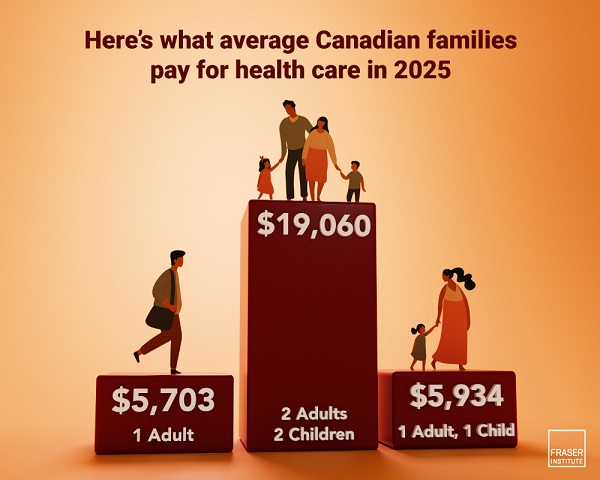
From the Fraser Institute
By Nadeem Esmail, Nathaniel Li and Milagros Palacios
A typical Canadian family of four will pay an estimated $19,060 for public health-care insurance this year, finds a new study released today by the Fraser Institute, an independent, non-partisan Canadian public policy think-tank.
“Canadians pay a substantial amount of money for health care through a variety of taxes—even if we don’t pay directly for medical services,” said Nadeem Esmail, director of health policy studies at the Fraser Institute and co-author of The Price of Public Health Care Insurance, 2025.
Most Canadians are unaware of the true cost of health care because they never see a bill for medical services, may only be aware of partial costs collected via employer health taxes and contributions (in provinces that impose them), and because general government revenue—not a dedicated tax—funds Canada’s public health-care system.
The study estimates that a typical Canadian family consisting of two parents and two children with an average household income of $188,691 will pay $19,060 for public health care this year. Couples without dependent children will pay an estimated $17,338. Single Canadians will pay $5,703 for health care insurance, and single parents with one child will pay $5,934.
Since 1997, the first year for which data is available, the cost of healthcare for the average Canadian family has increased substantially, and has risen more quickly than its income. In fact, the cost of public health care insurance for the average Canadian family increased 2.2 times as fast as the cost of food, 1.6 times as fast as the cost of housing, and 1.6 times as fast as the average income.
“Understanding how much Canadians actually pay for health care, and how much that amount has increased over time, is an important first step for taxpayers to assess the value and performance of the health-care system, and whether it’s financially sustainable,” Esmail said.
The Price of Public Health Care Insurance, 2025
- Canadians often misunderstand the true cost of our public health care system. This occurs partly because Canadians do not incur direct expenses for their use of health care, and partly because Canadians cannot readily determine the value of their contribution to public health care insurance.
- In 2025, preliminary estimates suggest the average payment for public health care insurance ranges from $5,213 to $19,060 for six common Canadian family types, depending on the type of family.
- Between 1997 and 2025, the cost of public health care insurance for the average Canadian family increased 2.2 times as fast as the cost of food, 1.6 times as fast as the average income, and 1.6 times as fast as the cost of shelter. It also increased much more rapidly than the average cost of clothing, which has fallen in recent years.
- The 10 percent of Canadian families with the lowest incomes will pay an average of about $702 for public health care insurance in 2025. The 10 percent of Canadian families who earn an average income of $88,725 will pay an average of $8,292 for public health care insurance, and the families among the top 10 percent of income earners in Canada will pay $58,853.
-
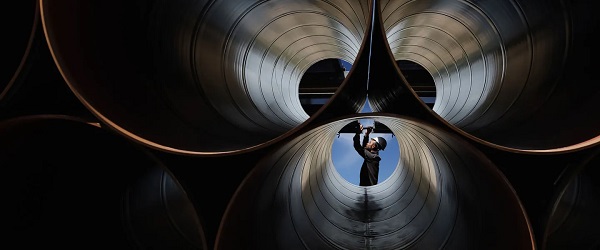
 Business2 days ago
Business2 days agoCanada can’t allow so many people to say ‘no’ to energy projects
-
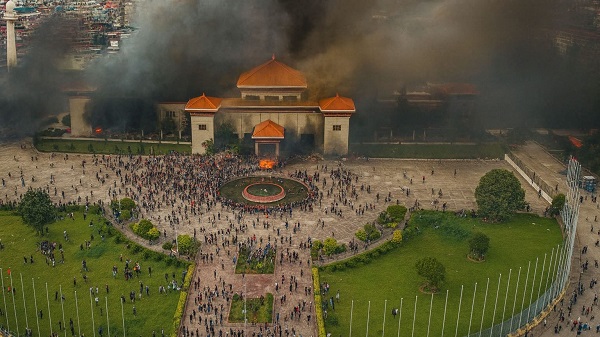
 International2 days ago
International2 days agoNepal Tried To Censor The Internet. Young People Set Parliament on Fire.
-

 Business2 days ago
Business2 days agoCanada Post is broken beyond repair
-
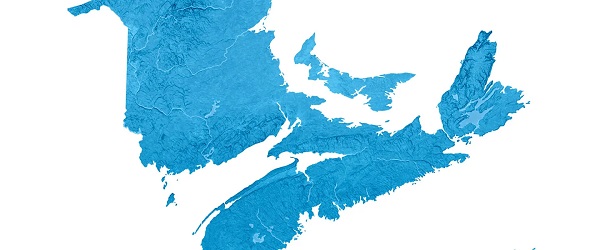
 Alberta2 days ago
Alberta2 days agoMaritime provinces can enact policies to reduce reliance on Ottawa / Alberta
-

 Alberta1 day ago
Alberta1 day agoProvince urging post secondary students to apply for loans, grants, scholarships, bursaries and awards
-
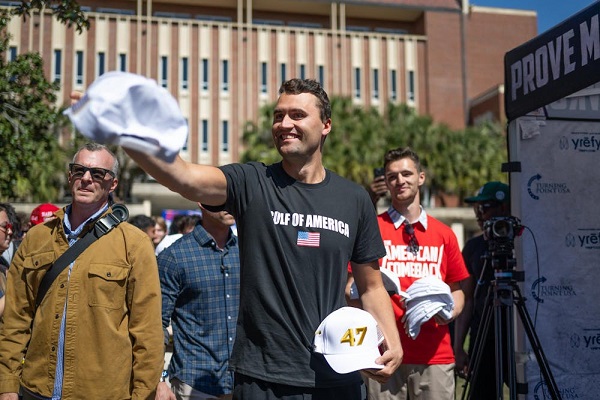
 Crime22 hours ago
Crime22 hours agoAlleged Killer Of Charlie Kirk Caught
-

 Business1 day ago
Business1 day agoPoilievre: “Carney More Irresponsible Than Trudeau” as Housing, Jobs, and Energy Failures Mount
-

 Crime1 day ago
Crime1 day agoConservative speaker and celebrity Charlie Kirk shot during Q & A event at Utah Valley University







